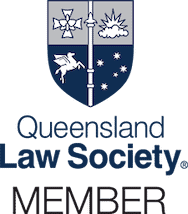In June 2022, Mr Parmegiani (the Plaintiff) commenced proceedings in the Supreme Court of New South Wales against Mr Hastwell (the Defendant) in respect of a medicolegal report the Defendant wrote under instructions from the Plaintiff’s former lawyers. The decision revisits the established principle of witness immunity in Australia.
What is witness immunity?
Witness immunity in Australia has its roots in English law. The principle was explained by Lord Mansfield in R v Skinner like this:
“…neither party, witness, counsel, the jury, or Judge can be put to answer, civilly or criminally, for words spoken in office”.
The reasoning behind this is to allow witnesses to present evidence without fear of legal repercussions and to prevent multiple legal actions re-examining the same evidence.
Plaintiff's argument
The Plaintiff’s position was that expert witness immunity required:
- A report; and
- The giving of evidence.
The Defendant did not provide evidence. The report was obtained prior to the start of litigation and was not used in that proceeding. According to the Plaintiff, it was the reason his former lawyers ceased acting for him.
The Plaintiff also relied upon the following matters in submissions to the Court:
- The principle of witness immunity was abolished in the United Kingdom by the case of Jones v Kaney;
- The limiting of advocate’s immunity in Attwells v Jackson Lalic Lawyers Pty Ltd, left open the possibility of the Plaintiff’s action.
The Plaintiff submitted that a final hearing would be required to:
- Decide whether the report was for advice or obtained in anticipation of legal proceedings.
- Determine the scope of witness immunity with respect to his case and having regard to the cases of Jones and Attwells.
Defendant's position
The Defendant argued that the claim should be dismissed on the basis of the expert witness immunity.
Court's decision
In judgment delivered on 24 August 2023, Justice Cavanagh:
- Granted leave to the Plaintiff to amend his Statement of Claim;
- Dismissed the proceeding;
- Ordered the Plaintiff to pay the Defendant’s costs.
Rationale of the Court
In dismissing the Plaintiff’s claim, Justice Cavanagh had regard to several matters, including:
- The well-established principle of witness immunity, by which the Court was bound.
- The requirement of the Court to take into account:
- Whether the claim was an abuse of process or disclosed no reasonable cause;
- The hopelessness of the proceeding;
- The novelty of the claim;
- The resolution of factual matters at interlocutory stage;
- The fact that the discretion to dismiss a claim at interlocutory stage should be used sparingly;
- Rule 13.4 of the Uniform Civil Procedure Rules 2015 (NSW).
Having considered these matters, Justice Cavanagh found as follows:
- The fact that the Plaintiff pursued multiple causes of action did not affect the Defendant’s immunity from suit.
- The report was of a kind that is regularly commissioned by persons seeking compensation.
- The fact that the report was not used was immaterial. If it had been favourable to the Plaintiff, he would have served it during his Federal Court proceedings.
- The principle of immunity from suit is not dependent upon whether the author of a report actually gives evidence.
- There is nothing in Attwells case to suggest that immunity is not available to an expert preparing a medicolegal report in accordance with the Expert Witness Code of Conduct, regardless of the stage at which the report was made.
- There was no factual dispute that prevented the Court from determining the Defendant’s motion.
Considerations
For now, Hastwell v Parmegiani puts to rest any narrowing of the immunity afforded to lay and expert witnesses under Australian law. This case will be of interest to those at the crossroads of law and medicine or other disciplines who provide expert evidence.




